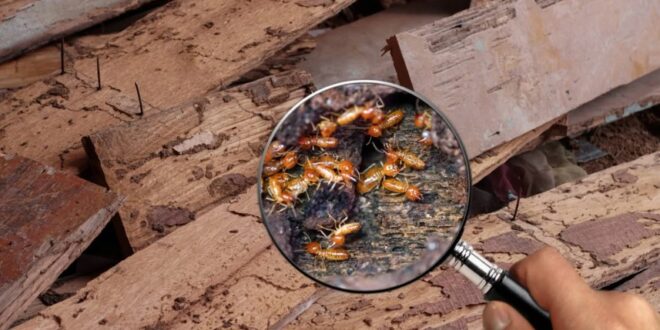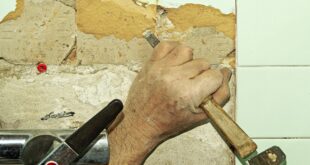Termites are tricky. They lead busy, hidden lives sneaking beneath the foundations of houses. And no one is any wiser until, sooner or later, damage begins to appear.
The first thing many people notice is cracked foundations. Then what follows is damage to interior walls, furniture, and structures. Having termite damage in your home is never good, no matter when it happens.
But what can you do if this happens to you? We’ve got you. Here is a guide on how to fix termite damage in your home:
Identify All Areas of Damage
To properly fix termite damage in your home, you first need to identify all areas of the damage. This means closely examining both the interior and exterior of your home. You need to look for signs such as buckled or discolored painted walls, weakening baseboards, or spots of wood that seem to have been eaten away.
Other signs of termite infestation include winged insects around your windows. You may also observe mud tubes along your foundation walls and within your home.
You may find damaged wood without any visible sign of entry. And you may hear a clicking or a crunching sound coming from your walls. Additionally, if your house has termites, you will find piles of pellet-like fecal matter near openings or along your walls.
It is important to detect the signs of a termite problem as soon as possible. This will help you address the situation directly.
Seal Damaged Materials
You need to seal any damaged materials in your home immediately to prevent further damage. To seal the area, you will need to inspect the damage to determine the extent of the problem.
Then, you need to cut away any materials that you cannot seal. Remove any crumbling wood, as well as insulation or other material if necessary.
Once you clear the area of heavily damaged material, you can apply a sealant to the remaining wood. Preferably, you should use a sealant with a pesticide in it to repel the termites. You must then apply the sealant over all the exposed wood to ensure you cover all areas.
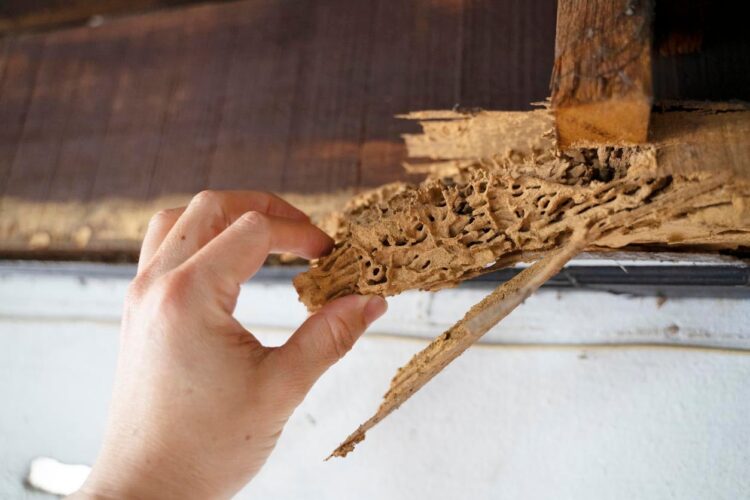
Replace Damaged Structural Woods
Depending on how extensive the damage is, you may need to remove a large portion of the wood and replace it. But before doing any repairs, you should treat the area with insecticidal products first. This will eliminate any further termite activity.
When replacing the wood, use insect and decay-resistant wood that has the correct moisture content. Try not to leave any gaps between the new wood and the existing structure. To help ensure future termite protection, treat the new wood with a borate-based wood preservative.
Then you start cutting a piece of replacement wood of the same size and shape as the damaged wood. Obtain a wood putty or epoxy and place a generous amount onto the replacement piece.
Attach the new piece securely into the area and press down evenly. Finally, leave the wood putty or epoxy to dry and add a finish coat.
Reduce Moisture and Address Fungus Growth
To fix termite damage in your home, you need to reduce moisture and address any fungus growth in your home. You can reduce moisture by regularly cleaning and inspecting for leaks or mold. And you can also have your door and window seals inspected for gaps or cracks.
You also need to search for any potential areas of fungus growth. Once you find them, you need to treat them with fungicidal sprays or dusts.
Be sure to routinely inspect and maintain any wood in your home. Use a surface-protecting pomp or sealer if needed.
Locate the Termite Nest
Start by searching for mud tubes running up from the ground into any cracks or crevices in your home. Look for potential entry points for termites. Inspect wood piled up around your foundation, trees, and shrubs planted too close to your home, and drain leaks.
If you can’t find the nest outside, search inside your home for sawdust or piles of tiny wings. Once you have found the nest, install a termite bait system around the outer edge of your home to help reduce the population.
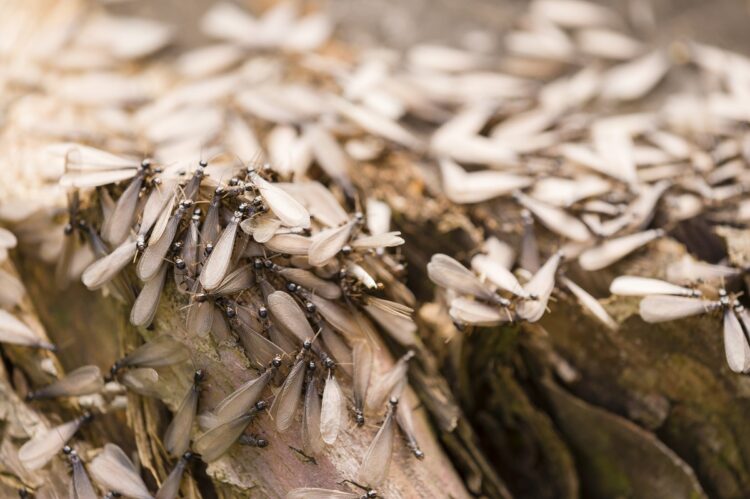
Get Professional Assistance
When dealing with termite damage in your home, it is important to get professional assistance as soon as possible. Experts can accurately assess the true extent of the damage and figure out the best course of action. Some companies will even use modern technology like infrared thermography to detect areas of high moisture.
A licensed and certified professional can then repair the damage. They can use special products designed for termite remediation that only they have access to. The technician might also suggest preventive measures to control future outbreaks.
They may guide you through applying wood preservatives or making sure there is no water leakage around the house. If you are dealing with scorpions for example, a scorpion and pest control service provider can assist you with expertise.
Implement a Termite Prevention Plan
After the damage has been fixed, you need to implement a termite prevention plan to prevent future infestations. First, you should reduce moisture around the foundation of your home.
Properly seal and weather-proof the foundation and windows and use termite-resistant materials. Inspect exterior wood for signs of termite damage regularly, and keep the yard clear of debris and saturated wood.
Have a yearly inspection done by pest control services and have mild termite damages treated immediately. Treat any exposed wood, such as around decks and patios to prevent these areas from becoming exposed to termites.
Finally, use bait and chemical barriers to terminate any termite nests around your home. Following these steps should provide successful termite prevention.
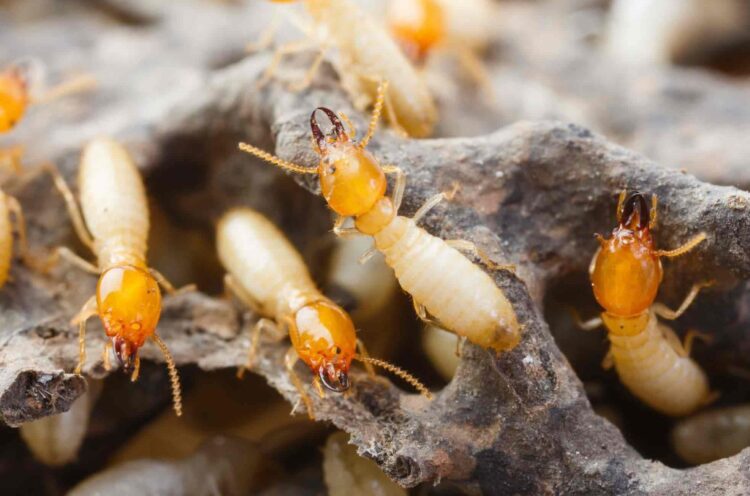
Learn How to Fix Termite Damage At Home
Termite repair is an in-depth process that requires planning and resources. With the right preparation and a reliable professional, you can get your home back to its original condition.
If you’re dealing with termite damage, don’t wait to get a proper evaluation or repair done. Follow our guide on how to fix termite damage immediately. If necessary, contact a pest control specialist for help.
Did you find this article helpful? If so, check out the rest of our site for more.
 Hi Boox Popular Magazine 2024
Hi Boox Popular Magazine 2024
